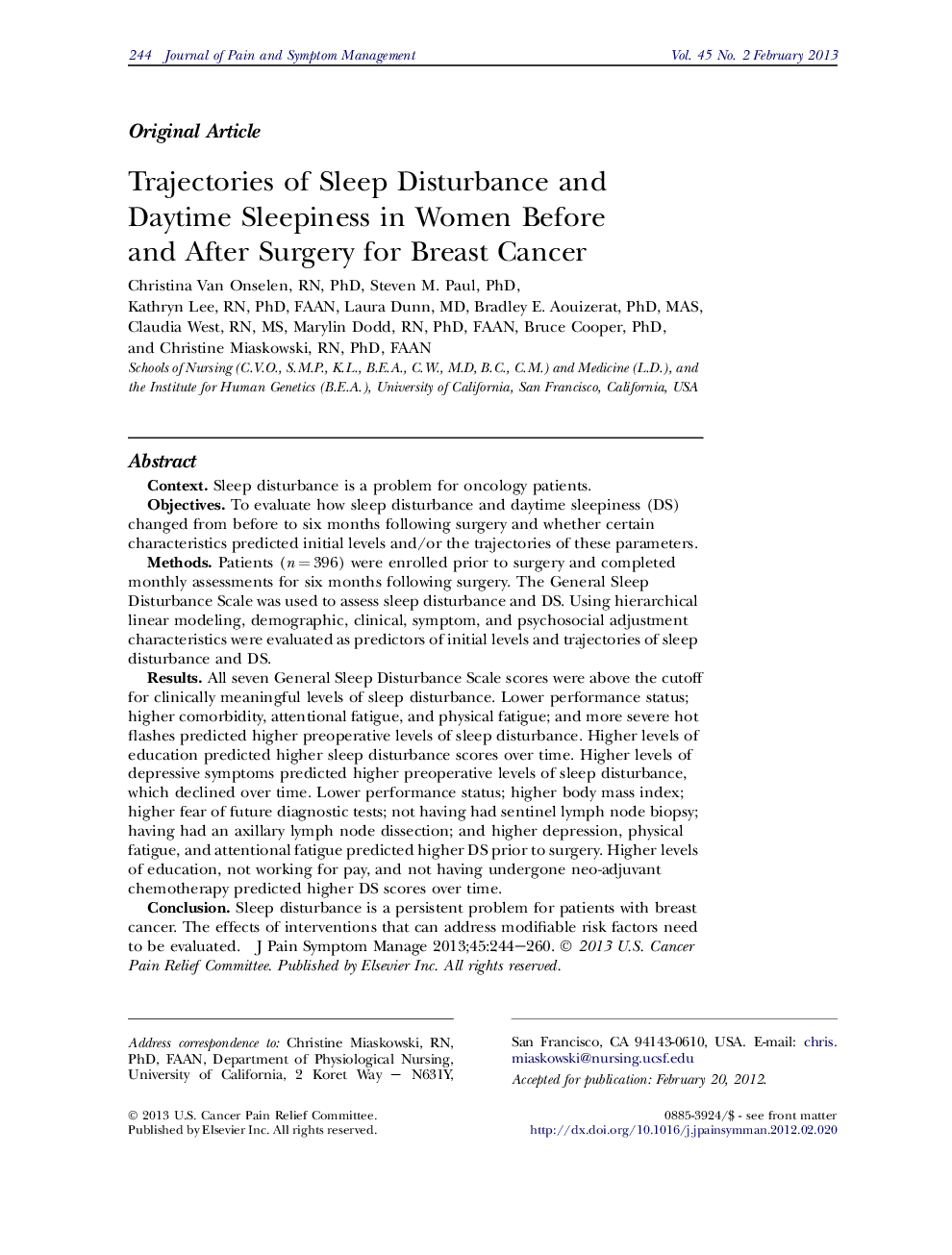| Article ID | Journal | Published Year | Pages | File Type |
|---|---|---|---|---|
| 2736065 | Journal of Pain and Symptom Management | 2013 | 17 Pages |
ContextSleep disturbance is a problem for oncology patients.ObjectivesTo evaluate how sleep disturbance and daytime sleepiness (DS) changed from before to six months following surgery and whether certain characteristics predicted initial levels and/or the trajectories of these parameters.MethodsPatients (n = 396) were enrolled prior to surgery and completed monthly assessments for six months following surgery. The General Sleep Disturbance Scale was used to assess sleep disturbance and DS. Using hierarchical linear modeling, demographic, clinical, symptom, and psychosocial adjustment characteristics were evaluated as predictors of initial levels and trajectories of sleep disturbance and DS.ResultsAll seven General Sleep Disturbance Scale scores were above the cutoff for clinically meaningful levels of sleep disturbance. Lower performance status; higher comorbidity, attentional fatigue, and physical fatigue; and more severe hot flashes predicted higher preoperative levels of sleep disturbance. Higher levels of education predicted higher sleep disturbance scores over time. Higher levels of depressive symptoms predicted higher preoperative levels of sleep disturbance, which declined over time. Lower performance status; higher body mass index; higher fear of future diagnostic tests; not having had sentinel lymph node biopsy; having had an axillary lymph node dissection; and higher depression, physical fatigue, and attentional fatigue predicted higher DS prior to surgery. Higher levels of education, not working for pay, and not having undergone neo-adjuvant chemotherapy predicted higher DS scores over time.ConclusionSleep disturbance is a persistent problem for patients with breast cancer. The effects of interventions that can address modifiable risk factors need to be evaluated.
